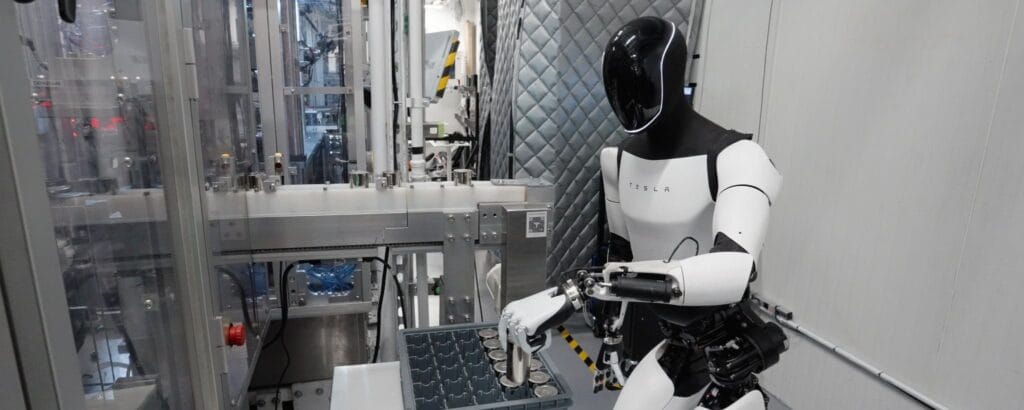Tesla recently filed a patent for an AI-driven vision system that could revolutionize the way autonomous robots perceive and navigate their environment using only camera inputs. This technological advancement, detailed in patent US20240185445A1 titled “Artificial Intelligence Modeling Techniques for Vision-Based Occupancy Determination,” promises to transform both Tesla vehicles and their humanoid robots, such as Optimus.
A Leap in Environmental Perception
Tesla’s vision system utilizes a unique neural network to process camera data and provide detailed 3D environmental information without the need for LiDAR or radar. This advanced technology divides space into 3D voxels, predicting occupancy, shape, semantic data, and movement of each voxel in real-time. This approach allows Tesla’s robots and autonomous vehicles to navigate more efficiently and adapt to changes in their environment immediately.
Real-Time Implementation
Designed to operate on the robot’s onboard computer, this vision system enables instant decision-making, improving robots’ ability to operate in diverse environments without the need for extensive pre-mapping. This not only accelerates the arrival of affordable autonomous robots but also paves the way for greater efficiency in real-time navigation and adaptation.
Applications in Vehicles and Humanoid Robots
The potential of this technology is vast. It can be implemented not only in Tesla’s autonomous vehicles but also in their humanoid robots like Optimus. By relying solely on camera inputs and onboard processing, Tesla’s new vision system could allow robots to navigate a variety of environments more efficiently and adapt to changes in real-time, eliminating the need for exhaustive pre-mapping.
Implications for the Future of Robotics
This breakthrough in Tesla’s vision technology represents a significant shift in the field of autonomous robotics. The ability to process visual data in real-time and translate it into a three-dimensional understanding of the environment could be a determining factor for the widespread adoption of autonomous robots. Furthermore, by reducing reliance on expensive sensors like LiDAR, Tesla is paving the way for more accessible and cost-effective robotic solutions.
In the words of Tesla CEO Elon Musk, “This AI-based vision system not only enhances our vehicles and robots’ ability to navigate autonomously but also represents a significant step towards creating a truly autonomous and efficient robotics ecosystem.”
Innovation and Competition in the Market
The introduction of this AI-based vision system positions Tesla at the forefront of innovation in autonomous robotics. Competition in this field is fierce, with companies like Boston Dynamics and Waymo developing their own solutions for autonomous navigation. However, Tesla’s ability to integrate this technology into its existing and future products gives it a significant edge.
In conclusion, Tesla’s patent for its AI-driven vision system marks a milestone in the development of autonomous technologies. With the ability to operate efficiently without expensive sensors and with improved real-time accuracy, this innovation has the potential to fundamentally change the robotics and autonomous vehicle industry. Tesla’s vision for a future with accessible and efficient autonomous robots is closer than ever to becoming a reality, promising a significant impact on daily life and the global technology industry.

